Fear of failure is one of an entrepreneur's most pervasive and powerful emotions. It can create self-doubt, cloud judgment, and limit the ability to take necessary risks. For many, the fear of making mistakes or falling short becomes a barrier to creativity, bold decision-making, and progress. In the high-stakes environment of startups, where resources are limited and uncertainties abound, this fear can halt innovation, derail momentum, and even lead to the premature demise of promising ventures.
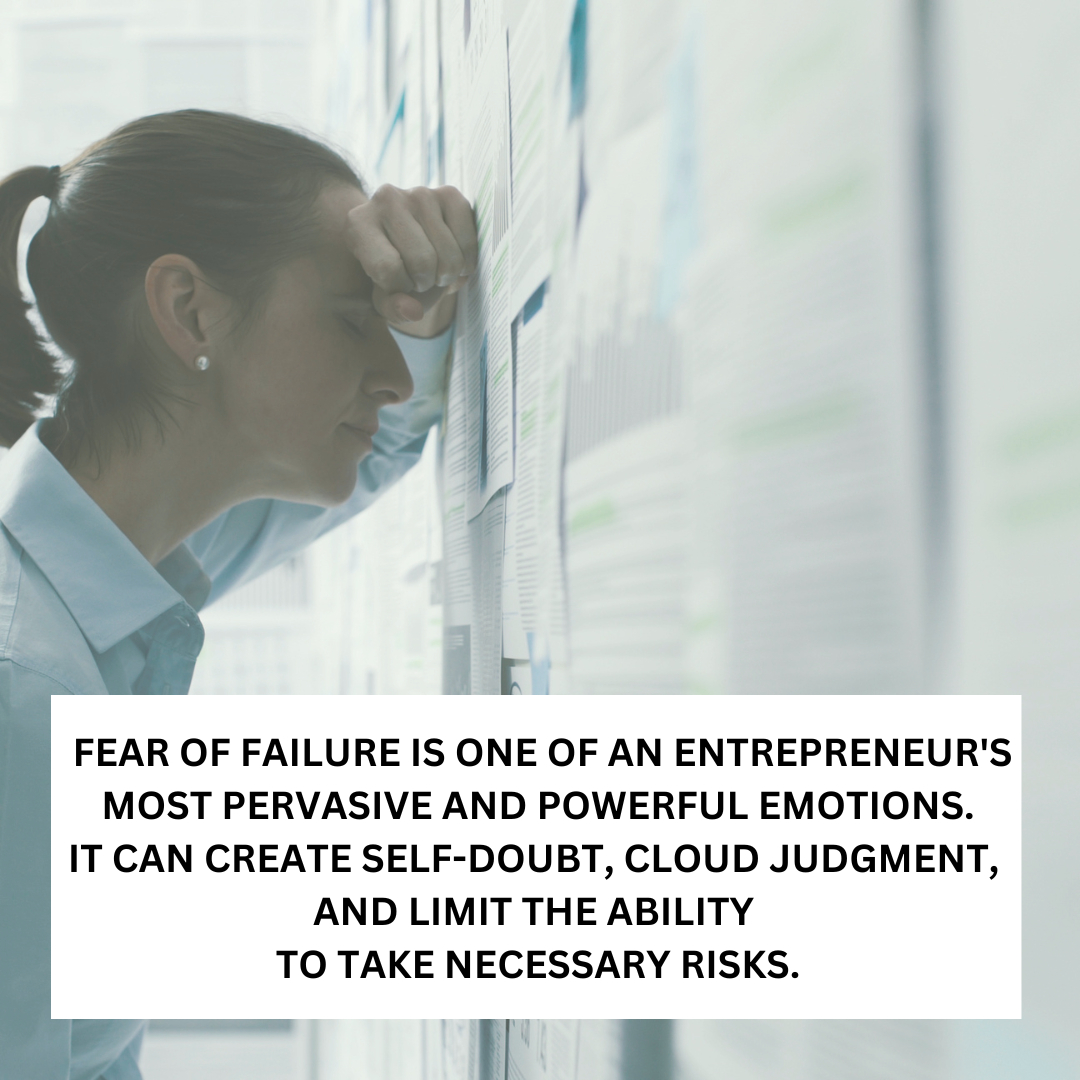
Yet, fear of failure isn’t inherently negative. When harnessed strategically, it can become a potent personal and professional growth tool. The key lies in shifting the narrative around failure—from a marker of defeat to a catalyst for learning and improvement. Successful entrepreneurs recognize that failure is an inevitable part of the journey. They embrace it as a stepping stone to refinement, innovation, and resilience, transforming fear from a paralyzing force into a powerful motivator.
Entrepreneurship is, by its nature, a risk-laden endeavor. From introducing novel products to venturing into competitive markets, every decision carries a degree of uncertainty. However, this uncertainty opens the door to groundbreaking ideas and opportunities. By adopting the right mindset and leveraging effective strategies, entrepreneurs can navigate the challenges of failure, use fear as a compass, and build the confidence needed to lead their ventures toward success.
This article delves into the practical ways entrepreneurs can confront the fear of failure, strengthen their resilience, and design robust risk management frameworks. By mastering these principles, you can lay a solid foundation for your startup’s growth and empower yourself to lead with clarity, courage, and conviction.
1. Understand the role of fear in entrepreneurship
Fear of failure is an almost universal experience among entrepreneurs. It can manifest in various ways, such as uncertainty about the future, perfectionism that delays progress, or fear of judgment from peers, customers, or investors. However, rather than viewing fear as a weakness or an obstacle, entrepreneurs should see it as a natural response to the high stakes of building something new. Fear, when acknowledged and understood, can serve as a powerful tool for preparation, focus, and growth.
In the entrepreneurial world, fear often arises because the outcomes are unpredictable, and the pressure to succeed is immense. The key to overcoming this is not to suppress the fear but to face it head-on and harness its energy constructively. Recognizing fear as a normal part of the process allows entrepreneurs to stay grounded and proactive instead of letting it paralyze their decision-making or innovation.
Example:
The story of Airbnb’s founders highlights how acknowledging and embracing fear can lead to transformative outcomes. When they launched their business, the concept of renting out private spaces to strangers was met with skepticism by investors and the public. They faced numerous rejections and doubts about their model’s viability. Instead of succumbing to fear, they used this feedback to refine their approach, improve their platform, and address potential customers' concerns. Over time, their willingness to adapt and persist turned Airbnb into one of the most successful startups in the world.
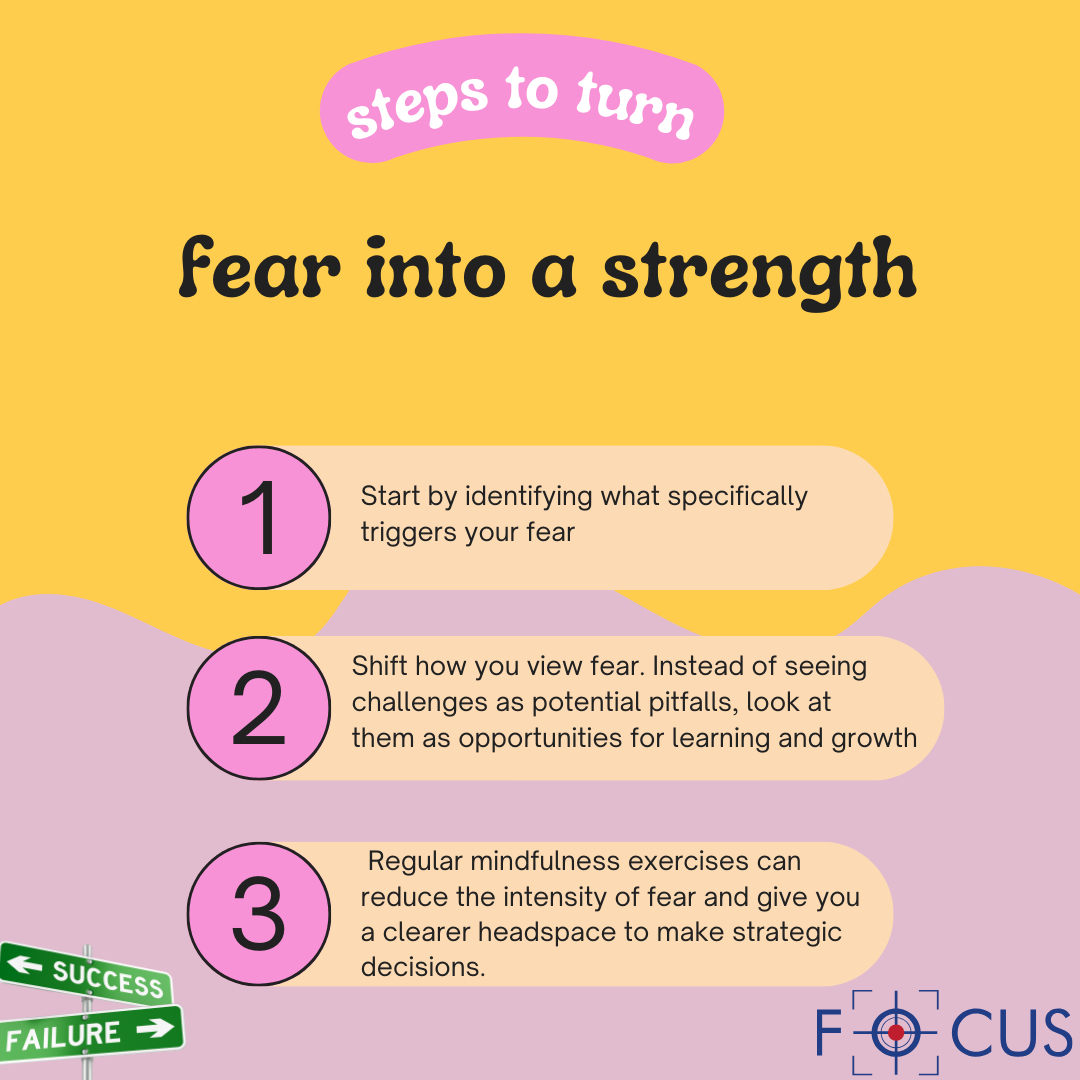
Actionable steps to turn fear into a strength:
Reflect on specific fears
Start by identifying what specifically triggers your fear. Is it the fear of public failure? Losing financial stability? Disappointing others? Writing these fears down allows you to bring them out of the shadows, making them more manageable. This clarity often reveals that many fears are exaggerated or based on assumptions rather than facts.
Reframe your perspective
Shift how you view fear. Instead of seeing challenges as potential pitfalls, look at them as opportunities for learning and growth. Every hurdle is a chance to refine your skills, test your resilience, and discover innovative solutions. For instance, if you're worried about a product launch failing, reframe it as a chance to gather valuable customer feedback that can guide your next iteration.
Practice mindfulness and emotional regulation
Fear often thrives on anxiety about the unknown. Mindfulness practices such as meditation, deep breathing, or journaling can help you stay present and calm during stressful times. Regular mindfulness exercises can reduce the intensity of fear and give you a clearer headspace to make strategic decisions. Apps like Headspace or Calm can be great starting points for incorporating these practices into your routine.
By understanding the role fear plays in your entrepreneurial journey and taking proactive steps to address it, you can transform fear into a guiding force that sharpens your focus, fuels your determination, and prepares you for success. Instead of letting fear control you, you’ll learn to work with it, ultimately turning it into one of your most valuable allies.
2. Redefine failure as a learning opportunity
Failure is often stigmatized as the ultimate negative outcome, but for entrepreneurs, it’s an invaluable teacher. Each misstep presents an opportunity to analyze, adapt, and grow. By redefining failure as a stepping stone rather than an endpoint, entrepreneurs can transform setbacks into sources of insight and innovation. The most successful leaders understand that failure isn’t a sign of incompetence—it’s a natural part of venturing into uncharted territory.
When entrepreneurs see failure as a learning opportunity, they embrace a mindset of resilience and curiosity. This shift enables them to approach challenges with a problem-solving attitude rather than fear or defeat. Failure becomes less about personal inadequacy and more about gathering data to refine strategies and achieve long-term goals.
Example:
Thomas Edison’s journey to invent the light bulb is a powerful illustration of this principle. Despite encountering thousands of unsuccessful attempts, Edison reframed each as progress. His perspective was summed up in his famous quote: “I have not failed. I've just found 10,000 ways that won’t work.” By viewing failure as a necessary part of the innovation process, he persisted until he achieved success, creating one of the most transformative inventions in history.
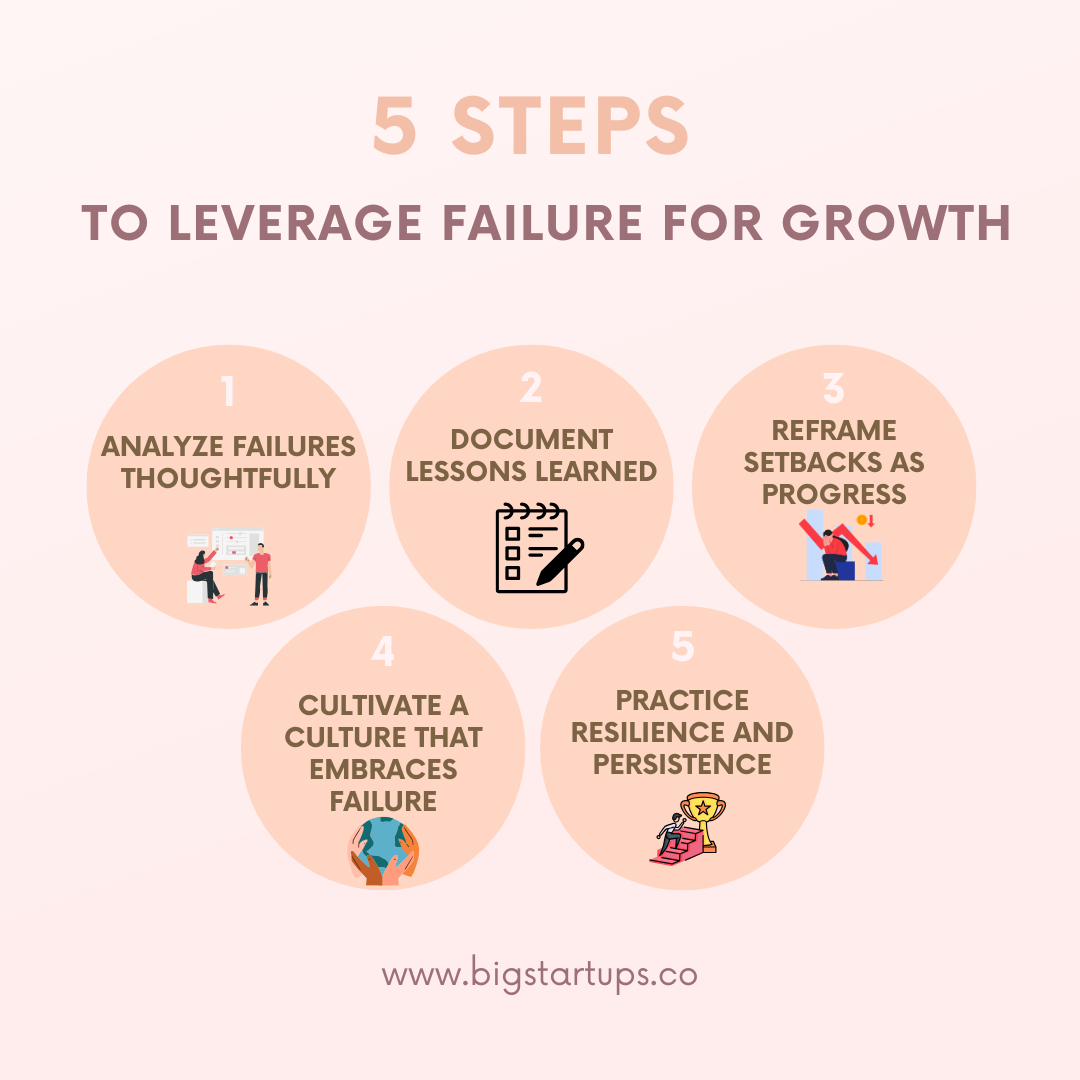
Actionable steps to leverage failure for growth:
Analyze failures thoughtfully
After experiencing a setback, take the time to dissect it. What went wrong? Was it a flawed strategy, poor timing, or an unforeseen variable? Dive deep into the specifics to uncover valuable insights. For example, if a marketing campaign falls flat, analyze the messaging, audience targeting, and execution to pinpoint areas for improvement.
Document lessons learned
Create a system to record the lessons from each failure. Whether it’s a journal, a digital note, or a formal report, writing down what you’ve learned ensures that insights are not lost. This documentation can serve as a guide for future decisions, helping you avoid repeating mistakes and enhancing your decision-making processes.
Reframe setbacks as progress
Shift your focus to what you’ve gained rather than what you’ve lost. For instance, even if a product launch doesn’t meet sales expectations, it may provide invaluable customer feedback or reveal new market trends. Celebrate the incremental progress that comes from each attempt, as it brings you closer to your ultimate goals.
Cultivate a culture that embraces failure
If you lead a team, encourage them to view failures as learning opportunities too. When employees feel safe experimenting and making mistakes, they are more likely to innovate and contribute boldly. Celebrate the lessons learned from failures as much as you celebrate successes.
Practice resilience and persistence
Accept that failure is a part of the journey, not the destination. The entrepreneurial path is rarely linear, and each setback can provide momentum if approached with the right mindset. As Edison demonstrated, persistence in the face of failure is often what separates those who succeed from those who give up.
By redefining failure as a learning opportunity, entrepreneurs can cultivate a mindset of resilience, creativity, and growth. Each failure becomes a building block, bringing them closer to their ultimate vision and equipping them with the tools to succeed in a rapidly changing and uncertain world. Instead of fearing failure, they learn to embrace it as an essential part of their journey.
3. Develop a resilient mindset
Resilience is a cornerstone of entrepreneurial success. It’s the ability to recover from setbacks, adapt to change, and keep moving forward despite obstacles. For entrepreneurs, the road to success is rarely smooth. Unexpected challenges, financial pressures, and market shifts are part of the journey. What separates successful entrepreneurs from others is not the absence of challenges but their ability to rise above them with determination and focus.
A resilient mindset allows entrepreneurs to view setbacks as temporary hurdles rather than insurmountable roadblocks. It fosters a sense of purpose and helps maintain focus on long-term goals, even during turbulent times. This perspective encourages adaptability and the belief that challenges are opportunities to grow stronger and more capable.
Example:
Elon Musk’s journey with Tesla and SpaceX is a testament to the power of resilience. Both companies faced near-collapse, with Tesla grappling with financial crises and SpaceX enduring several failed rocket launches. Many doubted Musk’s vision, but his resilience kept him pushing forward. He adapted his strategies, stayed committed to his long-term goals, and ultimately turned those ventures into groundbreaking successes. Today, Tesla is a leader in electric vehicles, and SpaceX has revolutionized space exploration with reusable rockets.
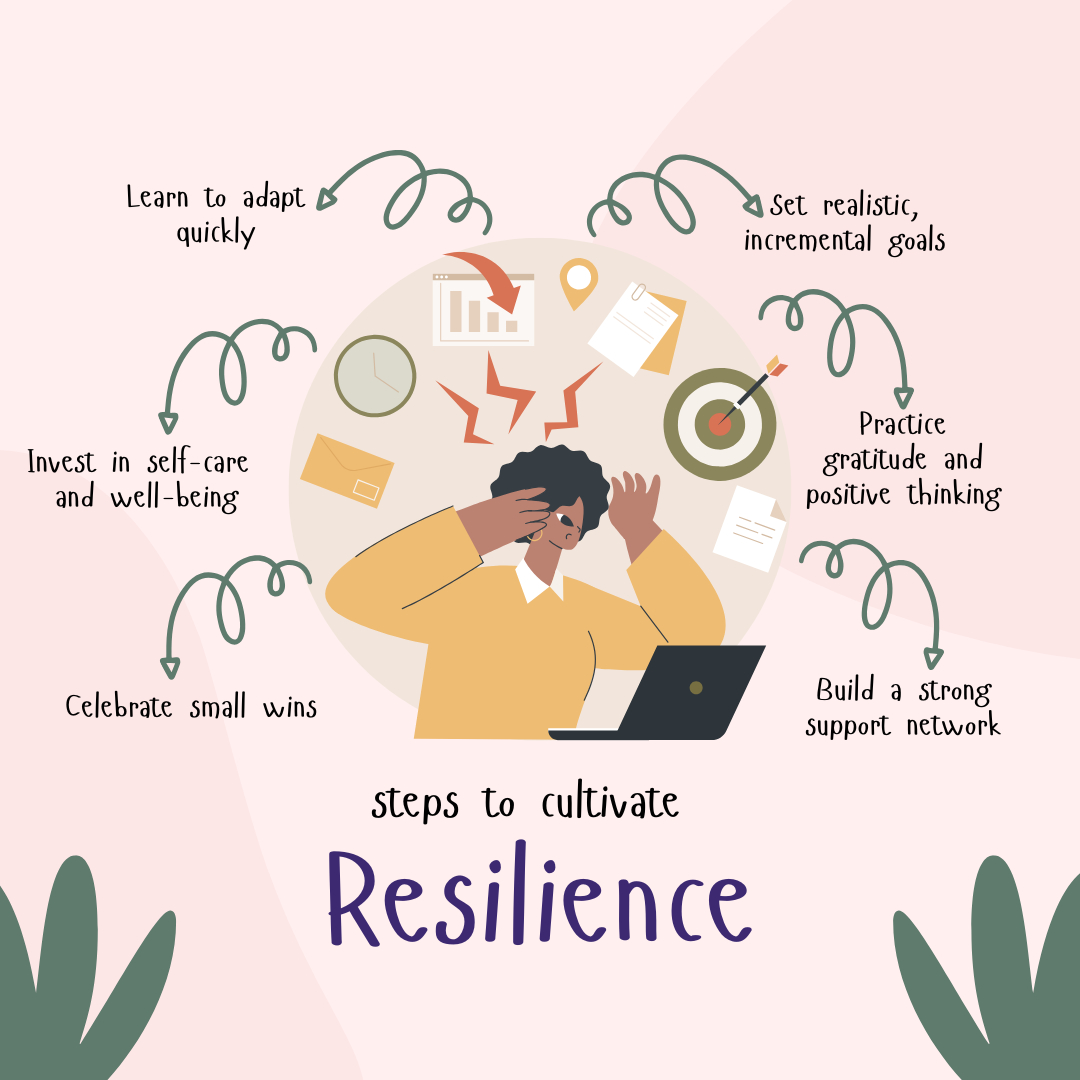
Actionable steps to cultivate resilience:
Build a strong support network
Surround yourself with mentors, peers, and advisors who can offer guidance, perspective, and encouragement during tough times. A robust support system not only helps you navigate challenges but also reminds you that you’re not alone in your journey. For example, joining entrepreneur communities or mastermind groups can connect you with like-minded individuals who have faced similar challenges.
Practice gratitude and positive thinking
Maintaining a positive outlook during setbacks is essential for resilience. Practicing gratitude helps you focus on the positives, even in difficult situations. Regularly acknowledge what’s going well, no matter how small. This habit boosts your motivation and reinforces your belief in your ability to overcome challenges. Tools like gratitude journals or mindfulness apps can help you integrate this practice into your daily routine.
Set realistic, incremental goals
After facing a setback, it’s crucial to regain momentum without overwhelming yourself. Break your larger goals into smaller, manageable tasks that you can achieve step by step. This approach builds confidence and provides a sense of progress, helping you stay focused on your ultimate objectives. For example, if a product launch fails, start by analyzing customer feedback and setting achievable milestones to refine and relaunch.
Learn to adapt quickly
Resilient entrepreneurs are flexible and open to change. When faced with unexpected challenges, take a step back to reassess your strategies and pivot where necessary. For example, if market conditions shift, explore new opportunities or adjust your business model to align with the changing landscape.
Invest in self-care and well-being
Physical and emotional well-being are critical for resilience. Regular exercise, healthy eating, and adequate sleep help you stay energized and focused. Additionally, practices like meditation or yoga can reduce stress and enhance your ability to respond to challenges calmly and effectively.
Celebrate small wins
Resilience isn’t just about bouncing back from failure; it’s also about recognizing and celebrating progress. Take time to acknowledge your achievements, no matter how small. This practice reinforces a sense of accomplishment and motivates you to keep pushing forward.
Focus on your "Why"
Reconnect with the purpose behind your entrepreneurial journey. Reminding yourself of your mission and long-term goals can provide clarity and drive, even when faced with difficulties. For instance, reflecting on how your product or service positively impacts customers can reignite your passion during challenging times.
By developing a resilient mindset, you can navigate the inevitable ups and downs of entrepreneurship with confidence and determination. Resilience isn’t just about enduring setbacks—it’s about growing stronger through them, adapting with agility, and maintaining unwavering focus on your vision.
4. Embrace calculated risks
Risk is an inherent part of entrepreneurship. While the uncertainty of outcomes can be daunting, success often lies in the ability to take risks wisely. The distinction between reckless and calculated risks is crucial: the latter involves thoughtful analysis, informed decision-making, and strategic planning. Calculated risks allow entrepreneurs to seize opportunities while minimizing potential downsides, making them a critical component of sustainable business growth.
Calculated risks require a blend of intuition, data, and strategic foresight. Entrepreneurs who embrace this approach don’t act impulsively or out of fear; instead, they rely on research, evidence, and structured thinking to guide their decisions. This mindset not only builds confidence but also ensures that risks taken align with long-term goals.
Example:
Jeff Bezos’s decision to leave his stable job and start Amazon is a classic example of a calculated risk. In the mid-1990s, the internet was still a nascent industry, but Bezos recognized its immense growth potential. He conducted thorough research, identifying books as a market segment that could be effectively sold online due to their wide variety and standardized nature. Armed with this insight, he launched Amazon from his garage. His calculated risk paid off, and Amazon is now one of the most valuable companies in the world.
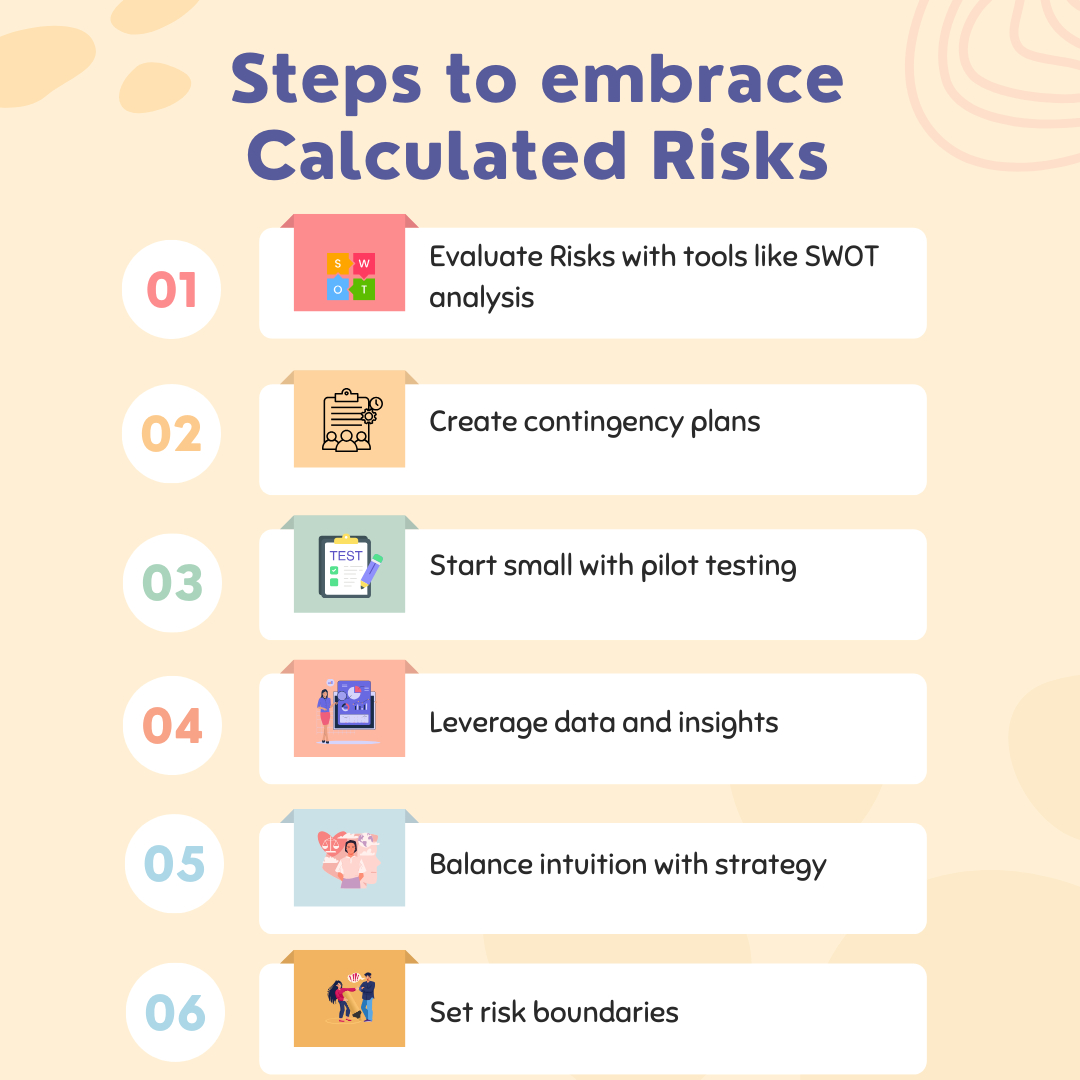
Actionable steps to embrace Calculated Risks:
Evaluate Risks with tools like SWOT analysis
Start by assessing the potential risks and rewards of any decision. Use frameworks like SWOT analysis to identify:
- Strengths: What advantages or resources do you have?
- Weaknesses: What vulnerabilities could impact success?
- Opportunities: What positive outcomes could result?
- Threats: What external challenges could arise?
- For example, before launching a new product, evaluate whether your team has the skills to execute the idea (strength), identify any gaps in market knowledge (weakness), consider growing demand in a specific niche (opportunity), and analyze competitors who might outperform you (threat).
Create contingency plans
Even with calculated risks, unexpected obstacles can arise. Prepare for potential downsides by crafting contingency plans. This could involve setting aside emergency funds, building alternate strategies, or identifying ways to pivot if initial efforts fall short. For instance, a food delivery startup might diversify its offerings to include groceries if customer demand for restaurant meals declines.
Start small with pilot testing
Before committing significant resources, test your ideas on a small scale. This approach allows you to validate assumptions, gather feedback, and refine your strategy with minimal exposure. For example, if you’re launching a new product, consider offering it to a select group of customers or a specific market segment to gauge interest before scaling production.
Leverage data and insights
Rely on data to inform your decisions. Analyze market trends, customer behavior, and financial forecasts to assess whether the potential benefits outweigh the risks. For example, before entering a new market, study consumer demographics, purchasing patterns, and regulatory requirements to ensure alignment with your business model.
Balance intuition with strategy
While data is vital, your intuition as an entrepreneur plays a role too. Use your instincts to identify opportunities, but always validate them with evidence and structured analysis. This balance ensures decisions are both inspired and grounded.
Set risk boundaries
Define how much risk you’re willing to take based on your resources and tolerance. Knowing your limits helps you avoid overextending your business and provides a clear framework for decision-making. For example, a startup with limited funds might decide to focus on one promising product rather than diversifying too early.
Learn from previous risks
Reflect on past decisions—both successful and unsuccessful. Analyze what worked, what didn’t, and why. This feedback loop helps refine your risk-taking approach and improves your ability to make calculated decisions in the future.
By embracing calculated risks, you can confidently navigate uncertainty while maximizing opportunities. This strategic approach not only minimizes potential downsides but also positions your business to adapt, innovate, and thrive in a competitive landscape. Instead of fearing risks, learn to manage and leverage them, transforming challenges into stepping stones toward success.
5. Turn setbacks into motivation
Setbacks are an inevitable part of entrepreneurship, but how you respond to them defines your journey. While initial disappointment is natural, successful entrepreneurs view setbacks as opportunities to learn, grow, and fuel their drive to succeed. When approached with the right mindset, these challenges can become stepping stones that sharpen your skills, refine your strategies, and reinforce your resilience.
Instead of allowing setbacks to demoralize them, visionary leaders use them as a catalyst for self-improvement and innovation. By channeling frustration into action, they transform adversity into motivation, ultimately emerging stronger and more focused.
Example:
Howard Schultz, the CEO of Starbucks, embodies this principle. In his early days, Schultz struggled to convince investors to support his vision of a coffeehouse chain that emphasized community and high-quality coffee. He faced rejection after rejection but refused to give up. Each “no” motivated him to refine his pitch, address potential concerns, and build a stronger case for his concept. His perseverance paid off, and today, Starbucks is a global brand with thousands of locations worldwide.
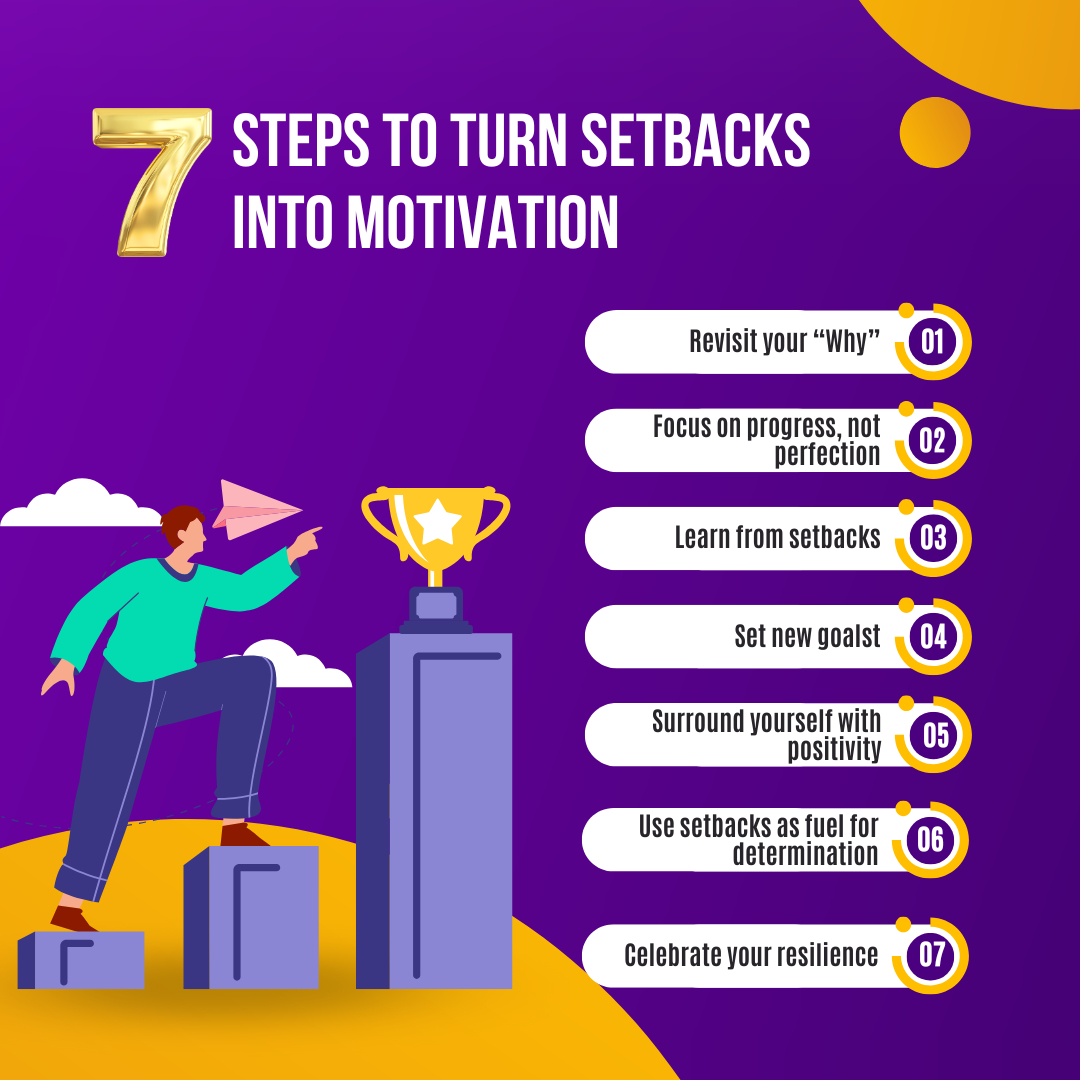
Actionable steps to turn setbacks into motivation:
Revisit your “Why”
When faced with setbacks, reconnect with the core mission or passion driving your entrepreneurial journey. Your “why” serves as a powerful anchor during challenging times, reminding you of the purpose behind your work. For example, if you started your business to solve a specific problem or make a positive impact, focus on how overcoming this setback brings you closer to achieving that goal.
Focus on progress, not perfection
Entrepreneurship is a marathon, not a sprint. Instead of fixating on perfection, celebrate the small victories that signify progress. Acknowledge how far you’ve come and use this perspective to stay motivated. For instance, if a product launch falls short of expectations, celebrate the fact that you’ve gathered invaluable customer feedback to improve your offering.
Learn from setbacks
Analyze what went wrong and identify actionable lessons. Treat each setback as a benchmark for future improvement. For example, if a marketing campaign underperformed, dig into metrics like engagement rates or customer feedback to understand why and adjust your approach for the next effort.
Shift Your mindset
Reframe setbacks as temporary detours rather than failures. Instead of saying, “This didn’t work,” think, “What can I learn from this, and how can I use it to move forward?” This mindset helps maintain momentum and fosters a solution-oriented approach.
Set new goals
After experiencing a setback, create realistic, short-term goals to regain focus and build confidence. Breaking down your next steps into manageable tasks helps you stay productive and motivated. For instance, if an investor declines your pitch, make it a goal to refine your business plan and reach out to five new prospects within a week.
Surround yourself with positivity
Draw strength from your support network. Whether it’s mentors, peers, or team members, their encouragement and insights can help you regain perspective and energy. Share your challenges with trusted individuals who can offer constructive advice and remind you of your potential.
Use setbacks as fuel for determination
Let challenges ignite your drive to prove doubters wrong or overcome obstacles. Channel your emotions into productive actions like refining your strategy, improving your skills, or doubling down on your efforts. For instance, if a competitor outpaces you, let it motivate you to innovate and differentiate your offerings.
Celebrate your resilience
Recognize the strength it takes to face adversity and keep going. Celebrate your ability to bounce back, even if the journey isn’t linear. This affirmation reinforces your belief in your capabilities and boosts your confidence for future challenges.
By turning setbacks into motivation, you can navigate the ups and downs of entrepreneurship with greater determination and clarity. Setbacks are not roadblocks; they are part of the process. With the right mindset, you can transform them into powerful motivators that drive your success and fortify your entrepreneurial spirit.
6. Prepare for the worst-case scenario
One of the most effective ways to overcome failure fears to prepare for the worst-case scenario. By envisioning and planning for potential setbacks, entrepreneurs can reduce anxiety and approach decisions with greater confidence. A well-prepared entrepreneur understands that while risks are inevitable, having a contingency plan in place can help mitigate the impact of unforeseen challenges and provide a safety net for recovery.
When you proactively anticipate difficulties, you gain clarity about your vulnerabilities and strengths. This preparedness doesn’t mean expecting failure—it means equipping yourself to handle it gracefully if it occurs. Instead of being paralyzed by fear, you can act decisively, knowing you’ve planned for possible outcomes.
Example:
Imagine a startup founder preparing to launch a new product. To guard against slow initial sales, they might create a financial safety net by allocating funds specifically for operational costs during the early stages. They might also explore backup revenue streams, such as offering related services or partnering with other businesses to share resources. These measures ensure that even if the product launch doesn’t meet expectations immediately, the business can sustain itself and adjust its strategy.
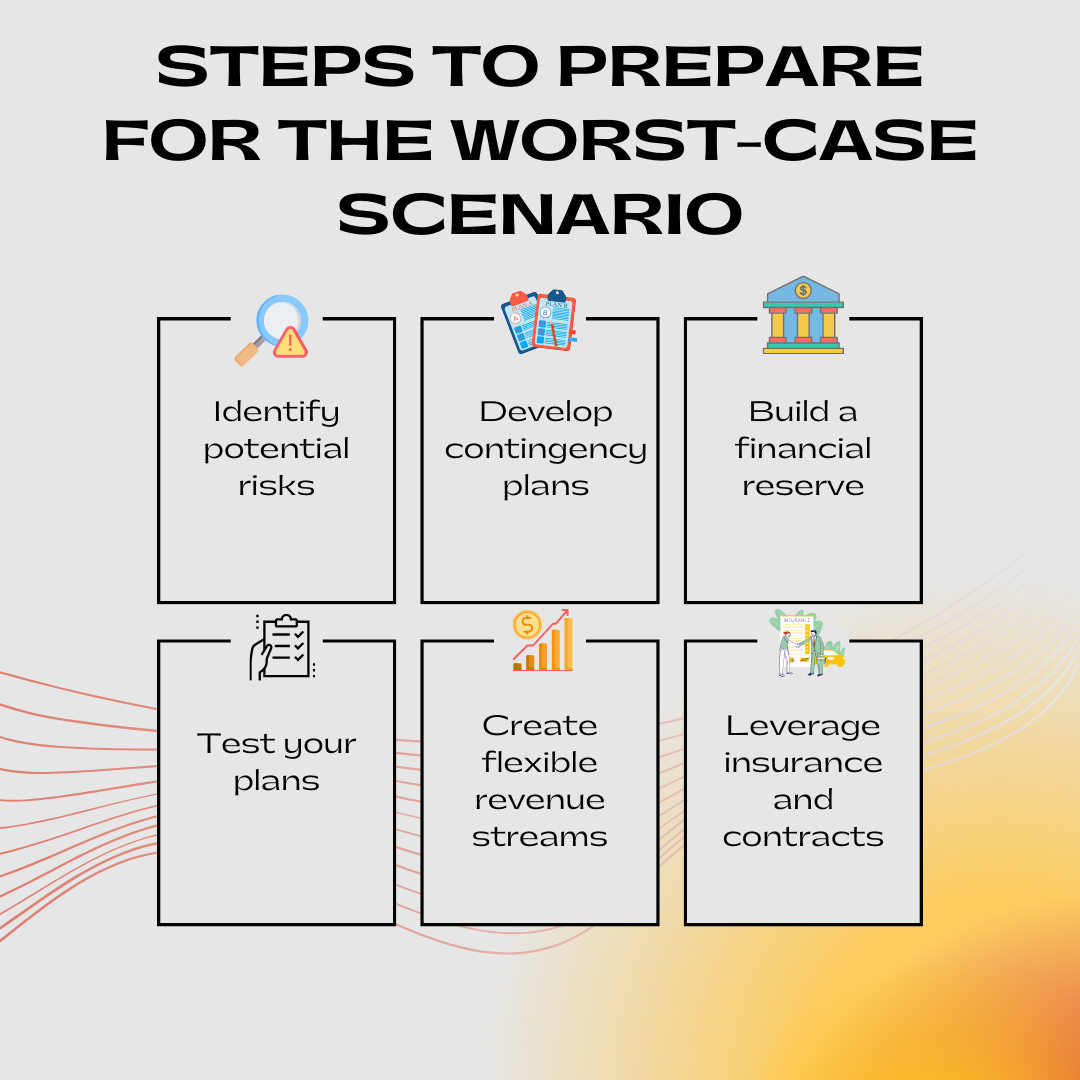
Actionable steps to prepare for the worst-case scenario:
Identify potential risks
Begin by conducting a comprehensive risk assessment of your business. Consider financial, operational, market, and external risks, such as economic downturns or supply chain disruptions. For instance, if your business relies on a single supplier, identify the risk of delays or shortages and explore alternative suppliers as a backup.
Develop contingency plans
Once risks are identified, create detailed contingency plans for high-impact scenarios. For example, if your startup depends on seasonal sales, plan how you will manage cash flow during off-peak months. This might include diversifying your product range or securing a line of credit.
Build a financial reserve
Establish an emergency fund to cover unexpected expenses or downturns. Financial reserves act as a buffer, giving you time and resources to address challenges without compromising core operations. For example, setting aside three to six months’ worth of operating expenses can help you weather unforeseen financial difficulties.
Test your plans
Periodically simulate worst-case scenarios to evaluate your preparedness. For instance, conduct stress tests to see how your business would fare under various adverse conditions, such as a 20% drop in revenue or a significant increase in costs. This exercise can reveal gaps in your strategy and help you refine your plans.
Create flexible revenue streams
Diversifying your income sources can provide stability during uncertain times. For example, a tech startup focusing on software development could offer consulting services to generate additional revenue during product development cycles.
Regularly update risk management strategies
As your business evolves, so do its risks. Schedule regular reviews of your risk management strategies to ensure they remain relevant. For instance, if you expand into new markets, assess the regulatory and cultural risks associated with the region.
Leverage insurance and contracts
Protect your business by securing appropriate insurance coverage and drafting robust contracts. For example, liability insurance can shield you from unexpected legal costs, while carefully negotiated contracts with suppliers can include clauses that safeguard your interests during disputes.
Stay transparent with stakeholders
Keep investors, team members, and key partners informed about your preparedness for potential setbacks. Transparency builds trust and ensures that everyone involved understands the plans in place to address challenges. For instance, during a financial downturn, openly communicating with employees about cost-cutting measures can foster unity and cooperation.
By preparing for the worst-case scenario, you not only reduce the fear of failure but also create a foundation for resilience. This proactive approach empowers you to face uncertainty with confidence, adapt quickly to changing circumstances, and focus on long-term growth. Far from being pessimistic, preparation is a strategic tool that enables you to transform potential crises into opportunities for innovation and progress.
Conclusion
Fear of failure is a natural part of the entrepreneurial journey, but it doesn’t have to hold you back. By reframing failure as a learning opportunity, developing resilience, and taking calculated risks, entrepreneurs can transform fear into a driving force for success. Leading with confidence doesn’t mean eliminating fear—it means embracing it, learning from it, and using it to fuel innovation and growth.
In the dynamic world of startups, the ability to turn fear into fuel is a defining trait of successful leaders. By adopting these strategies, you can build the confidence and resilience needed to navigate challenges and achieve your entrepreneurial vision.







.png)













